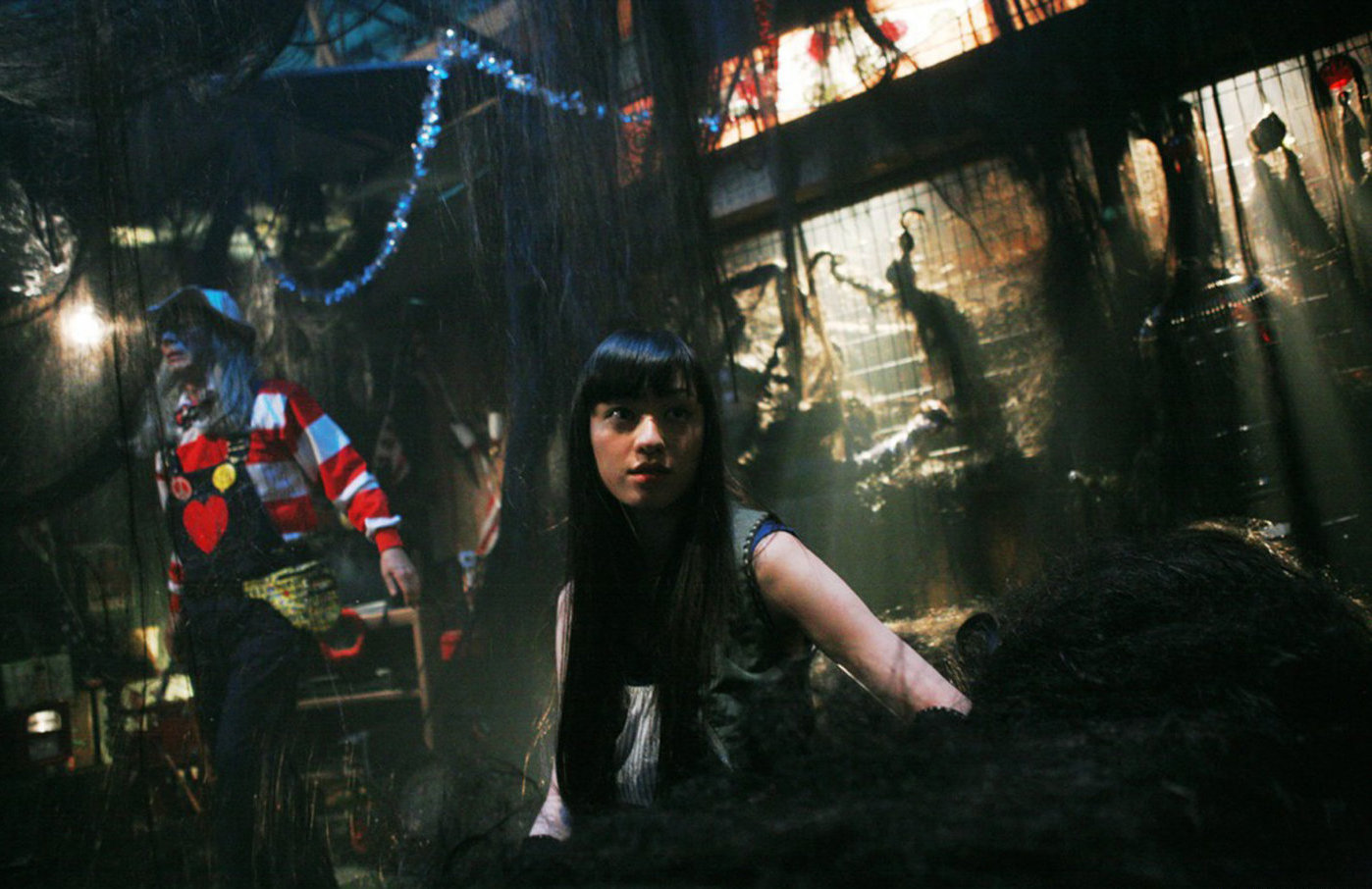There’s a moment at the end of Love & Peace, an otherwise lumpy adult fairy tale, where the story threatens to come to a satisfyingly destructive head. At this point, Ryoichi (Hiroki Hasegawa), an office drone turned rock star, is confronted by Turtle, a magical kaiju-sized snapping turtle that helps Ryoichi realize his callow dreams of fame and fortune. Instead of stomping the shit out of Ryoichi, Turtle—later renamed “Love”—forgives Ryoichi for not only abandoning him, but also becoming a colossal egomaniac. This anti-climactic finale isn’t just a major cop-out given how hard Sono pushes viewers towards hating Ryoichi for his unearned success and ungrateful preening. Sono encourages us to damn his unlovable lead, and then entreats us to turn the other cheek. This wouldn’t be such a startling about-face if half of Love & Peace‘s alternately sacchariney and cynical fable weren’t so consistently grating. The film’s bifurcated narrative concerns the rise and fall of Ryoichi—later renamed “Wild Ryo”—and his agonizingly drawn-out reunion with Love. Ryo only becomes famous thanks to Love, a goofy-looking, doey-eyed puppet (he grows larger throughout the film until he becomes Gamera-sized). Love sings out the melodies—and even suggests song lyrics—for both of Ryo’s hit songs, one of which pointedly rebukes the historical white-washing inherent in Tokyo’s real-life 2020 Olympics campaign. Still, Ryo shuns Love three times because Sono’s top-heavy central metaphor (symbols of rebellion become mass media tools after they abandon Love!) wouldn’t otherwise make sense. So a grown-ass man abandons a giant turtle because he’s afraid of what other people will think of his pet/muse. This wouldn’t be so stupid if Love were likable, and not a Z-grade Muppet who hangs out with a bunch of abandoned misfit toys throughout the worse half of Love & Peace.
Toxically precious and dizzyingly nonsensical.
Let me back up a moment. In the beginning, Love is flushed down the toilet by Ryo. He’s quickly discovered and adopted by Pa (Toshiyuki Yishida), a magical drunken hobo who lives in the sewer with a community of real animals and boring-looking puppets. Love wants to reunite with Ryo, but Pa’s surrogate children—all of whom look uninspired, and are voiced by forgettable voice actors—are afraid of being discovered and abandoned again. Sono never really follows through on his puppet characters’ neurotic fears, though Maria, a talking doll, does eventually try to reunite with her former owner. Still, almost every scene involving Pa or his toy children is toxically precious and dizzyingly nonsensical. Talking robots and real cats cry about being lost while Love infrequently breaks away from the group long enough to be rejected again by Ryo. And then comes Love & Peace‘s out-of-the-blue upper of an ending, a major kick in the nuts after Sono forces us to spend so much time hanging out with a chipper homeless man and his bargain-bin imaginary friends. Never mind the fact that Ryo deserves to be taken down a peg after he abuses the trust and support of Love, his back-up band, and love interest Yuko (Kumiko Asô). Sono’s resolution—one that absolves Ryo, the character who almost single-handedly slows down the already molasses-slow narrative’s progress—insults viewers’ intelligence after the director’s wasted so much time with a motley crew of whiny, sub-Toy Story play-things. In this way, Sono only ostensibly encourages viewers to cultivate forgiveness and love in their lives. By film’s end, you’ll wish Love ended his misadventures by setting his master on fire, and then killing himself. Love & Peace will leave you feeling unkind, and not in a productive way.
This film has yet to be theatrically released in the U.S.







